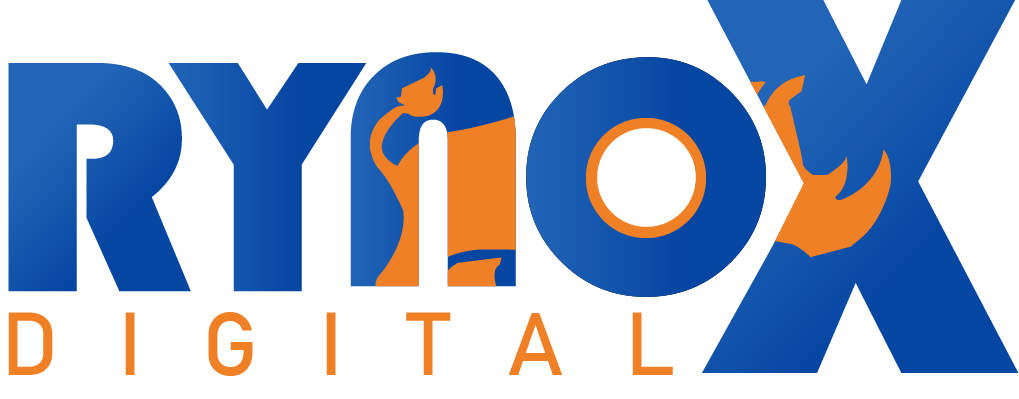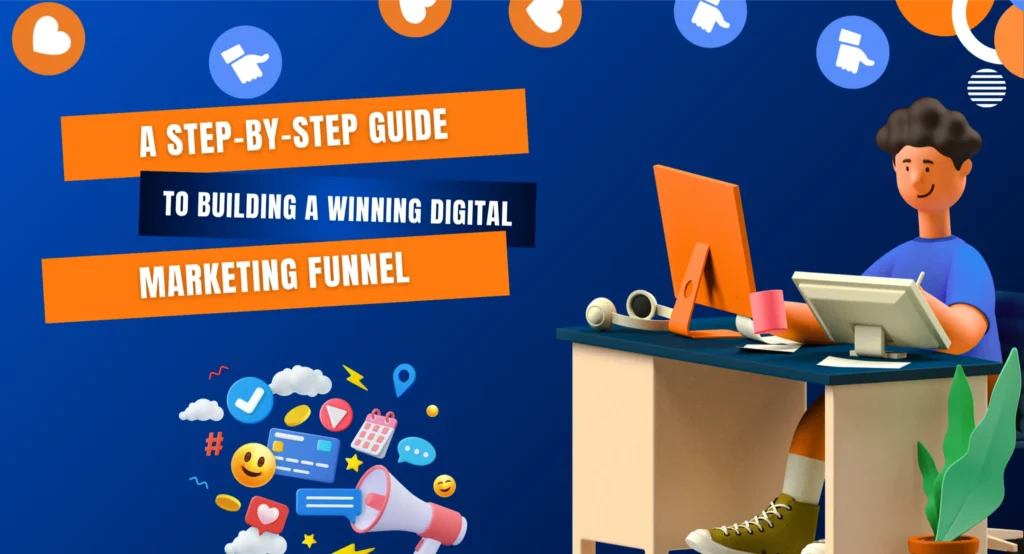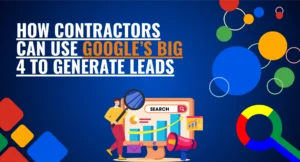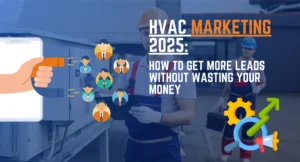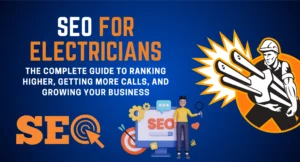Introduction: Why Every Business Needs a Digital Marketing Funnel
What Is a Digital Marketing Funnel?
A digital marketing funnel is the structured path potential customers take from first discovering your business to finally becoming loyal clients. Think of it as a roadmap of the customer journey, broken into stages: Awareness, Consideration, Conversion, and Retention. Each stage requires different marketing strategies to guide prospects closer to a buying decision.
For contractors, construction businesses, and service providers, the funnel is critical because buying decisions are rarely made instantly. Homeowners don’t typically hire a roofing company, remodeling contractor, or real estate agent on impulse. They research, compare, and evaluate options before reaching out. That means without a funnel guiding them, leads slip away — and competitors win the job.
Why Digital Marketing Funnels Matter in 2025
With online competition growing every year, simply having a website or running ads isn’t enough. A digital marketing funnel ensures that every marketing effort — from social media posts to Google Ads — has a purpose and a next step. Instead of random clicks and traffic, the funnel nurtures visitors into qualified leads and eventually paying customers.
Here’s why it matters today more than ever:
- Ad costs are rising. Without a funnel, you’ll waste money driving clicks that don’t convert.
- Customers are overwhelmed. Prospects need clear direction at every step of their journey.
- Trust is everything. Especially in industries like construction, prospects need proof before committing. A funnel gives you structured opportunities to build that trust.
The Funnel vs. Random Marketing
Many small businesses make the mistake of focusing on disconnected marketing tactics: a Facebook post here, a boosted ad there, maybe an occasional blog. While these activities can bring visibility, they often fail to produce results because there’s no system tying them together.
A digital marketing funnel solves this problem by creating a cohesive path. For example:
- A prospect reads a blog post (Awareness).
- They download a free renovation checklist (Consideration).
- They schedule a consultation through your website (Conversion).
- They later refer a friend after receiving a follow-up email (Retention).
Without this structure, businesses end up chasing attention instead of generating leads.
Why Contractors Need Funnels Specifically
In the construction industry, sales cycles are longer, projects are high-value, and trust is crucial. A construction marketing funnel ensures:
- Prospects see proof of past work before deciding.
- They can easily find pricing guides, FAQs, and testimonials.
- They’re nurtured through multiple touchpoints (ads, emails, retargeting) until they’re ready to commit.
Without a funnel, contractors often rely only on word-of-mouth or inconsistent leads from ads. With one, every marketing dollar works harder, and customer acquisition becomes predictable.
What This Guide Covers
In this blog, we’ll walk through each stage of the funnel in detail:
- How to attract awareness with content, ads, and SEO.
- How to nurture consideration with case studies, guides, and retargeting.
- How to drive conversions with optimized web design and calls-to-action.
- How to retain clients with reviews, follow-up campaigns, and referrals.
By the end, you’ll have a clear understanding of how to build a winning digital marketing funnel that reduces wasted spend, increases leads, and grows your business.
Stage 1: Awareness — Building the First Connection
What the Awareness Stage Means
The awareness stage is the very top of the digital marketing funnel. At this point, potential customers may not even know your business exists. They’re either realizing they have a problem (like needing a new roof or wanting to remodel their kitchen) or they’re casually researching options. Your job here isn’t to sell immediately — it’s to get noticed, provide value, and make a strong first impression.
In other words, this stage is all about visibility. The more people who see your brand and connect it with solutions to their problems, the more opportunities you’ll have to guide them deeper into the funnel.
Why Awareness Is Crucial for Contractors and Service Businesses
Unlike e-commerce, where buyers may make quick decisions, construction and service-based businesses have longer sales cycles. Homeowners, property managers, and business owners usually:
- Realize they need a service.
- Research online for trusted providers.
- Shortlist a few businesses before reaching out.
If your business doesn’t show up during that initial search, you risk losing the customer to competitors. A strong awareness strategy ensures you’re visible right when prospects start their journey.
Awareness Tactics That Work in 2025
There are several effective ways to build awareness at the top of your digital marketing funnel:
- Search Engine Optimization (SEO):
- Optimize your website and blog content with keywords like “kitchen remodeling near me” or “best roofing contractor in [city].”
- For contractors, local SEO is especially powerful. Showing up in Google’s local map pack builds instant trust and visibility.
- Content Marketing:
- Write blog posts answering common questions, like “How much does bathroom remodeling cost in 2025?”
- Publish case studies showcasing past projects.
- Create how-to videos or infographics that educate potential clients.
- Social Media Visibility:
- Share before-and-after project photos on Instagram.
- Post tips, quick guides, and live Q&A sessions on Facebook.
- Use LinkedIn to connect with commercial property owners or B2B clients.
- Paid Advertising (PPC & Social Ads):
- Run Google Ads targeting high-intent search terms.
- Use Facebook and Instagram ads to showcase projects or promote blog posts.
- Keep ads informative and educational rather than overly salesy at this stage.
Example: Awareness for a Construction Business
Imagine a local remodeling company. A homeowner searches “modern kitchen renovation ideas.” Your blog post titled “10 Kitchen Renovation Trends for 2025” appears in Google. They click, read your post, and see your brand for the first time.
You’re not pitching them directly, but you’ve started building trust. That visitor is now aware of your business — the first critical step of the digital marketing funnel.
Common Mistakes in the Awareness Stage
Many businesses struggle here by:
- Focusing only on sales ads. Instead of providing value, they push for consultations too early.
- Neglecting SEO. Without optimization, your website won’t appear in searches.
- Ignoring local visibility. Contractors often forget to target specific neighborhoods or regions.
The goal of this stage isn’t to close deals but to get prospects into your ecosystem. Skipping awareness or doing it wrong results in fewer opportunities at every later stage of the funnel.
How Awareness Sets Up the Funnel
The awareness stage may not generate immediate leads, but it plants seeds. Every blog post, social media update, and SEO-optimized page creates more entry points for potential clients. Over time, this builds a steady flow of prospects who can be nurtured into paying customers.
A winning digital marketing funnel doesn’t start with aggressive selling — it starts with visibility, value, and trust-building.
Stage 2: Consideration — Nurturing Interest Into Intent
What the Consideration Stage Means
The consideration stage sits right in the middle of the digital marketing funnel. At this point, potential customers know they have a problem and are actively looking for solutions. They’re not just browsing anymore — they’re comparing options, researching providers, and weighing which business they can trust.
Your role here is to nurture that interest, build credibility, and position yourself as the go-to choice. Instead of a hard sell, you’re guiding prospects with valuable information, social proof, and reassurance that you understand their needs.
Why the Consideration Stage Is Vital for Contractors
In construction and service industries, trust makes or breaks deals. A homeowner may have narrowed down their options to two or three contractors. The company that provides the clearest proof of expertise, transparent information, and helpful resources is usually the one that wins.
This is where a strong digital marketing funnel shows its power. By having structured content and systems in place for the consideration stage, you can move prospects one step closer to becoming paying clients.
Best Consideration-Stage Strategies
- Case Studies and Project Portfolios
- Showcase detailed examples of completed work.
- Include photos, timelines, and client testimonials.
- For example, a remodeling company might highlight a kitchen renovation project, showing before-and-after images and outlining the process.
- Downloadable Resources
- Offer free guides or checklists in exchange for contact information.
- Examples: “Roofing Repair Checklist,” “2025 Home Renovation Cost Guide.”
- This positions you as an authority while capturing leads for follow-up.
- Testimonials and Reviews
- Display authentic customer feedback prominently.
- Encourage satisfied clients to leave Google Reviews or video testimonials.
- In the construction industry, reviews can be more persuasive than ads.
- Webinars or Video Content
- Host short educational webinars like “5 Mistakes to Avoid in Kitchen Remodeling.”
- Record project walkthroughs to show transparency.
- Videos humanize your brand and create trust faster.
- Email Nurturing Campaigns
- Use email sequences to stay in touch with leads who downloaded a resource or visited your site.
- Share helpful content, FAQs, and reminders about your services.
- Nurturing keeps your brand top of mind until they’re ready to convert.
Example: Consideration in Action
Let’s say a homeowner is exploring “bathroom remodeling contractors in Austin.” They’ve already read your blog on remodeling costs (awareness stage). Now they download your free “10 Design Tips for Small Bathrooms” guide.
After that, they receive a follow-up email with links to your bathroom renovation portfolio. By the time they’re ready to make a decision, you’re not just another contractor — you’re the trusted expert who’s been providing value throughout their journey. That’s the power of the digital marketing funnel.
Common Mistakes in the Consideration Stage
Many businesses stumble here by:
- Failing to capture leads. If you don’t have forms, downloads, or CTAs, visitors leave without giving contact info.
- Ignoring proof. Without testimonials, case studies, or project photos, prospects doubt credibility.
- Over-selling too early. Aggressive sales pitches at this stage can scare prospects away.
The goal is to nurture, not pressure. The right balance of education and credibility moves prospects naturally toward conversion.
How Consideration Sets Up the Funnel
By the end of this stage, prospects should:
- Trust your brand.
- Understand your services clearly.
- See proof that you deliver results.
- Feel confident enough to request a consultation or quote.
This middle step transforms cold awareness into warm, ready-to-convert leads — proving why the digital marketing funnel is essential for consistent business growth.
Stage 3: Conversion — Turning Leads Into Paying Clients
What the Conversion Stage Means
The conversion stage is the bottom of the digital marketing funnel — the point where prospects take the leap from being “interested leads” to becoming paying customers. By now, they know their problem, have compared solutions, and are ready to decide. The only question left is: will they choose your business or someone else’s?
Your job at this stage is to make saying “yes” easy. Every detail — from your web design to your call-to-action — must remove friction, reinforce trust, and give prospects confidence that you’re the right choice.
Why Conversions Are Critical in Construction Marketing
For contractors and service-based businesses, conversions don’t mean an instant online purchase like in e-commerce. Instead, they typically involve:
- Filling out a contact form for a quote.
- Calling to schedule an appointment.
- Booking a consultation or inspection.
Because leads are high-value — a single project might be worth thousands — even a small increase in conversion rate can dramatically impact revenue. A construction company moving from a 3% conversion rate to 10% could see triple the leads without spending an extra dollar on ads. That’s why optimizing the bottom of your digital marketing funnel is so powerful.
Conversion Strategies That Work
- High-Impact Landing Pages
- Each service (roofing, remodeling, painting, etc.) should have its own optimized page.
- Pages must include: project photos, clear benefits, FAQs, and multiple CTAs.
- Keep layouts clean and mobile-friendly to avoid overwhelming visitors.
- Strong, Clear Calls-to-Action (CTAs)
- Buttons and forms should stand out visually.
- Use action-driven text: “Request Your Free Quote,” “Book Your Consultation Today.”
- Place CTAs at the top, middle, and bottom of the page for maximum visibility.
- Trust Signals That Reassure
- Highlight testimonials and Google reviews.
- Show badges for licenses, certifications, or warranties.
- Case studies can also serve as proof that you deliver results.
- Fast Response Times
- Leads at this stage want quick answers. Integrating live chat or WhatsApp makes connecting easy.
- Automated email confirmations reassure prospects that their request has been received.
- Special Offers or Incentives
- Limited-time discounts, free consultations, or bundled packages can push hesitant leads to act now.
- For example: “Book your roof inspection this month and get a free gutter cleaning.”
Example: Conversion in Action
A homeowner searching “kitchen remodeling contractor near me” lands on your ad and clicks through to a dedicated landing page. The page shows stunning before-and-after photos, lists the services offered, and features a testimonial: “They transformed my kitchen in just six weeks — highly recommend!”
At the top of the page is a bold CTA: “Schedule Your Free Consultation Today.” The homeowner clicks, fills out the form, and instantly receives an email confirmation. Within minutes, your team follows up to schedule a call.
That seamless journey is what a well-built digital marketing funnel looks like at the conversion stage.
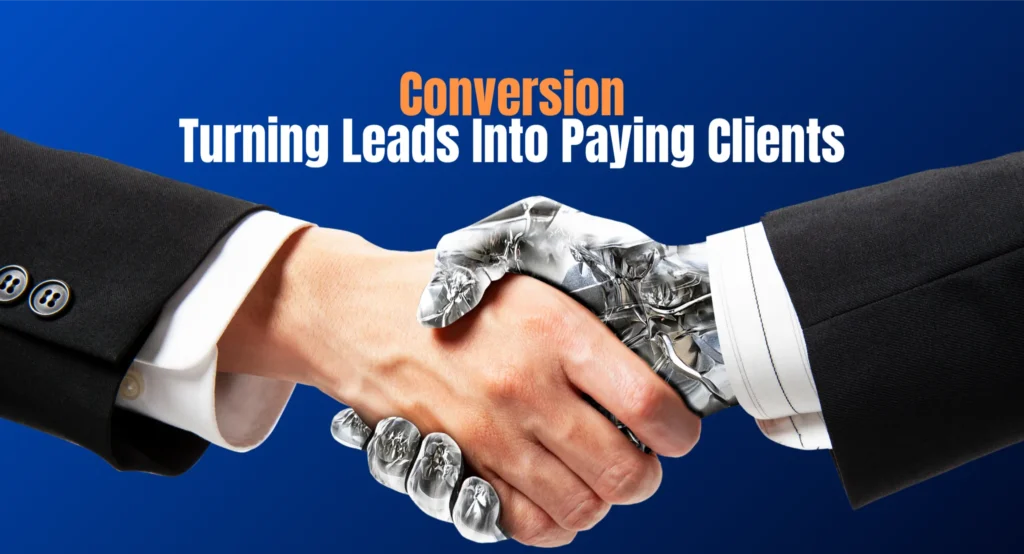
Common Mistakes at the Conversion Stage
Businesses often sabotage conversions by:
- Overloading pages with too much text or clutter.
- Hiding CTAs in footers or hard-to-find spots.
- Ignoring mobile optimization, causing forms to break on phones.
- Failing to follow up quickly on leads, letting competitors swoop in.
Each of these mistakes creates friction, and friction kills conversions.
How Conversion Fits Into the Funnel
The conversion stage is where all your previous efforts pay off. Awareness brought prospects in. Consideration built trust. Now, conversion secures the lead. But remember: the funnel doesn’t end here. Retention and repeat business are just as important for long-term growth.
The Bottom Line
The conversion stage is where revenue is won or lost. A well-optimized digital marketing funnel ensures every lead has a clear, friction-free path to becoming a client. With strong landing pages, persuasive CTAs, and trust-building elements, contractors and businesses can dramatically increase conversions without increasing ad spend — turning clicks into contracts.
Stage 4: Retention & Advocacy — Turning Clients Into Loyal Promoters
Why Retention Matters in the Digital Marketing Funnel
Most businesses focus heavily on attracting new clients but forget that retaining existing ones is often more profitable. In fact, research shows that acquiring a new customer can cost 5–7 times more than keeping an existing one. That’s why the digital marketing funnel doesn’t stop at conversion — it extends into retention and advocacy.
At this stage, your goal is twofold:
- Keep clients happy so they return for future services.
- Turn them into advocates who refer your business and leave positive reviews.
For contractors and service-based businesses, retention can be a game-changer. A homeowner who hired you for a bathroom remodel today may call you for a kitchen upgrade next year — and recommend you to friends in between.
The Role of Retention in Construction Marketing
In industries like construction, every project is high-value. A single referral or repeat project could be worth thousands of dollars. That’s why retention strategies are essential in the digital marketing funnel. They not only keep you top-of-mind but also amplify your reach through word-of-mouth and online reviews.
Strategies for Retention & Advocacy
- Post-Project Follow-Ups
- Send a thank-you email after completing a project.
- Provide maintenance tips or care instructions for completed work (e.g., “How to care for your new wood floors”).
- A thoughtful follow-up makes clients feel valued and keeps your brand in mind for the future.
- Encourage Reviews and Testimonials
- Ask satisfied clients to leave a Google Review or provide a short testimonial.
- Showcase these reviews on your website and social media.
- Reviews are one of the strongest advocacy tools in a digital marketing funnel, especially for contractors.
- Loyalty & Referral Programs
- Offer discounts or incentives for clients who refer new customers.
- Example: “Refer a friend for roofing services and receive a $100 gift card.”
- Referral programs turn happy customers into active promoters of your business.
- Email Marketing for Repeat Business
- Use email campaigns to stay in touch with past clients.
- Share seasonal offers, new services, or helpful homeowner tips.
- For example: “Winter Roof Maintenance Checklist” or “Top 5 Renovation Trends for 2025.”
- Social Media Engagement
- Continue engaging past clients by tagging them in project showcases (with permission).
- Encourage them to share your posts with their networks.
- This not only builds loyalty but also extends your brand reach.
- Customer Service Excellence
- Fast responses to inquiries, even post-project, show clients you care.
- Excellent service creates advocates who voluntarily promote your business.
Example: Advocacy in Action
A remodeling client is thrilled with their new kitchen. After receiving a personalized thank-you email and a request for a Google Review, they happily leave a 5-star rating. A month later, they share your project photos (tagged from your Instagram) with their friends, generating two new leads.
In this case, the funnel didn’t just stop at conversion. Retention and advocacy created a ripple effect — one satisfied client led to multiple new opportunities, maximizing the return on your digital marketing funnel.
Common Mistakes in Retention
Many businesses miss out on this stage by:
- Neglecting communication after the project ends.
- Failing to ask for reviews, leaving positive client experiences invisible online.
- Not offering incentives for referrals.
When businesses ignore retention, they constantly chase new leads, which is expensive and unsustainable.
How Retention Completes the Funnel
Retention and advocacy close the loop of the digital marketing funnel. Instead of treating every client as a one-time transaction, you create a cycle where:
- Past clients return for more work.
- Happy clients bring in referrals.
- Positive reviews attract new prospects at the awareness stage.
This creates a self-sustaining funnel that fuels long-term growth without requiring endless ad spend.
The Bottom Line
The digital marketing funnel isn’t complete without retention and advocacy. By delighting clients, encouraging reviews, and creating referral opportunities, you turn satisfied customers into loyal promoters. This not only maximizes the lifetime value of each client but also ensures your business grows through the most powerful marketing of all — word-of-mouth.
Tools & Best Practices for Building a Digital Marketing Funnel
Why Tools Matter in the Digital Marketing Funnel
A digital marketing funnel is only as strong as the systems supporting it. While strategy provides the structure, the right tools make execution efficient and measurable. Without them, businesses risk gaps in follow-up, missed opportunities, and wasted ad spend. For contractors and service-based companies, where every lead is high-value, having reliable tools ensures your funnel works seamlessly from awareness to retention.
Essential Tools for Each Funnel Stage
- Awareness: Tools for Visibility
- SEO Tools (SEMrush, Ahrefs, or Ubersuggest): Help identify keywords like “roofing contractor near me” or “home renovation costs 2025” to boost search rankings.
- Social Media Schedulers (Buffer, Hootsuite): Consistent posting keeps your brand visible without daily manual effort.
- Graphic Design Tools (Canva): Create engaging project showcases and infographics to attract attention at the top of the digital marketing funnel.
- Consideration: Tools for Nurturing
- Email Marketing Platforms (Mailchimp, ActiveCampaign): Automate follow-up sequences to keep leads warm.
- Content Management Systems (WordPress with Elementor): Build case study pages, service breakdowns, and resource guides.
- Video Platforms (YouTube, Loom): Share walkthroughs, testimonials, and project tips to build trust.
- Conversion: Tools for Closing Leads
- CRM Systems (HubSpot, Zoho, GoHighLevel): Track leads, schedule follow-ups, and ensure no inquiry slips through the cracks.
- Form Builders (Gravity Forms, Typeform): Simple, mobile-friendly forms improve completion rates.
- Live Chat Tools (WhatsApp Business, Tidio, Chaty): Allow prospects to connect instantly — critical for service-based businesses.
- Retention & Advocacy: Tools for Long-Term Growth
- Reputation Management (Trustpilot, Google My Business): Collect and display reviews that fuel advocacy.
- Referral Program Platforms (ReferralCandy, InviteReferrals): Encourage clients to bring in new leads.
- Email Loyalty Campaigns: Regularly update past clients with seasonal tips, new services, and exclusive offers.
Best Practices for Funnel Success
- Map the Customer Journey
Every funnel should be tailored to your audience. Contractors, for example, should map how homeowners discover them, what questions they ask, and what reassures them before booking a consultation. - Align Web Design With the Funnel
A professional website isn’t just a digital brochure — it’s the backbone of your digital marketing funnel. Ensure service pages, CTAs, and navigation align with each funnel stage. - Use Automation Wisely
Automation saves time, but it shouldn’t feel robotic. Personalized emails, follow-up reminders, and tailored offers show prospects they’re more than just another lead. - Track Everything
Use analytics tools like Google Analytics and call tracking software to measure performance at every funnel stage. Knowing which campaigns drive conversions prevents you from wasting money on ads or tactics that don’t work. - Test and Refine Constantly
Funnels aren’t static. Run A/B tests on landing page headlines, CTA button colors, and email subject lines. Even small improvements can significantly increase conversions.
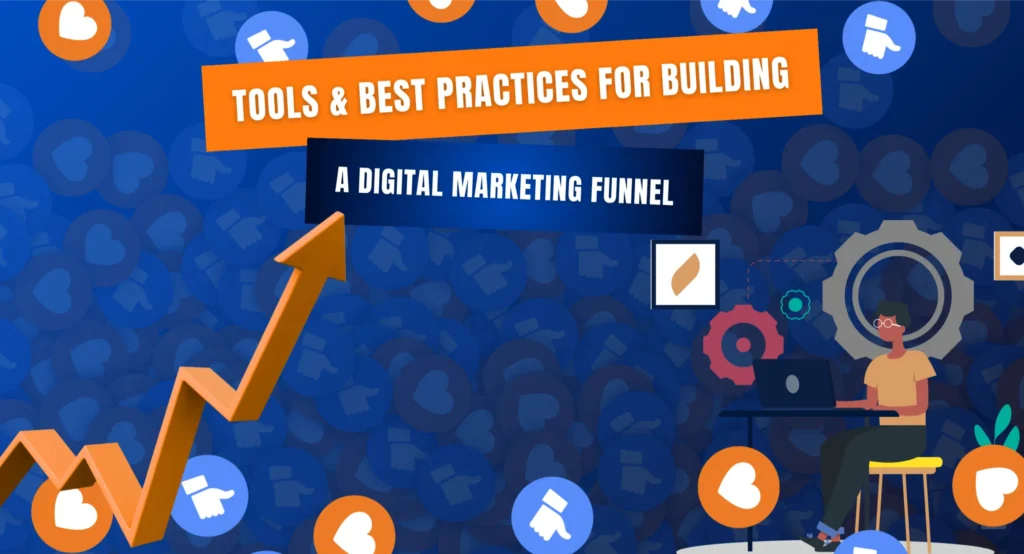
Example: Funnel Tools in Action for a Contractor
A roofing company runs Google Ads (awareness) and sends traffic to a dedicated landing page built on WordPress (consideration). They use a CRM like HubSpot to capture leads and automate follow-up emails (conversion). After completing jobs, they send clients a review request via Google My Business and offer a referral bonus (retention).
Each tool connects seamlessly, ensuring the digital marketing funnel runs smoothly and delivers consistent results.
The Bottom Line
Building a successful digital marketing funnel doesn’t just require strategy — it requires the right tools and best practices to bring that strategy to life. By leveraging SEO platforms, CRMs, automation, and reputation management tools, contractors and service-based businesses can create a funnel that not only attracts leads but also nurtures and retains them for long-term growth.
Conclusion: Building a Digital Marketing Funnel That Delivers
Why the Digital Marketing Funnel Is Non-Negotiable
In today’s competitive landscape, businesses that don’t use a digital marketing funnel are at a disadvantage. Random advertising, scattered social media posts, and outdated websites may bring visibility, but they don’t create predictable growth. A digital marketing funnel ties everything together — guiding prospects from awareness to consideration, conversion, and long-term retention. Without this structure, leads are lost, ad budgets are wasted, and competitors gain the upper hand.
Recap of the Funnel Stages
Over the course of this guide, we’ve walked through the four essential stages of a winning digital marketing funnel:
- Awareness — Getting your business noticed through SEO, content marketing, and social media.
- Consideration — Building trust with case studies, reviews, and resources that prove your expertise.
- Conversion — Using optimized web design, landing pages, and strong CTAs to turn visitors into leads.
- Retention & Advocacy — Keeping clients engaged with follow-ups, email campaigns, and referral programs.
Each stage of the digital marketing funnel plays a vital role. If even one step is weak, the funnel leaks and results suffer. But when all four stages work in harmony, your business creates a self-sustaining system for attracting and converting clients.
Why It Matters for Contractors and Service Businesses
For contractors, remodelers, and home service providers, the stakes are even higher. A strong digital marketing funnel doesn’t just increase leads — it creates trust, reduces wasted ad spend, and provides consistent opportunities for growth. Imagine tripling your conversion rate not by spending more on ads, but by building a funnel that nurtures every click into a conversation and every conversation into a client. That’s the power of a well-built digital marketing funnel.
Common Mistakes to Avoid
- Running ads without a clear digital marketing funnel to capture and nurture leads.
- Treating a website like a brochure instead of the foundation of the digital marketing funnel.
- Ignoring retention, which reduces the lifetime value of each client.
Avoiding these mistakes ensures your marketing isn’t just activity — it’s strategy.
The Path Forward
Now that you understand how a digital marketing funnel works, the next step is implementation. Whether you’re building one from scratch or optimizing your current process, remember that consistency and testing are key. Funnels aren’t one-size-fits-all — they must be tailored to your industry, audience, and goals.
For construction and service businesses, a tailored digital marketing funnel can transform the way you generate leads. Instead of relying only on word-of-mouth or inconsistent ad campaigns, you’ll have a predictable system that works 24/7 to bring in prospects, build trust, and drive conversions.
Ready to Build Your Digital Marketing Funnel?
At Rynox Digital, we specialize in creating high-performing websites and marketing systems designed to fuel every stage of the digital marketing funnel. From building awareness with SEO and ads to converting leads with web design and keeping clients engaged with retention strategies, we provide the tools and expertise you need to grow.
Stop guessing. Start scaling. Let us help you design a digital marketing funnel that attracts leads, converts clients, and keeps your business ahead of the competition.
Grow smarter with Rynox Digital — let us build your digital marketing funnel that turns clicks into clients.
